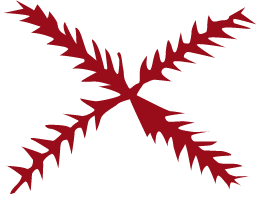The Discovery
In a groundbreaking discovery that captivated the world, a mummified baby woolly mammoth named Nun cho ga (Hän for ‘big animal baby’) was unearthed on Indigenous Peoples Day 2022, within Tr’ondëk Hwëch’in Traditional Territory. This remarkable find, heralded as the most complete mummified mammoth in North America, holds immense significance for the Tr’ondëk Hwëch’in people and their cultural heritage.
The mummified mammoth, believed to be over 30,000 years old, holds significant remarkable value. Geologists from the Yukon Geological Survey and the University of Calgary have established that Nun cho ga likely perished and became frozen during the ice age. Furthermore, an examination revealed that this baby woolly mammoth is a female, similar in size to the 42,000-year-old Lyuba, another infant woolly mammoth discovered in Siberia. Such findings provide invaluable insights into the prehistoric world and contribute to our understanding of Earth’s ancient ecosystems.
For the Tr’ondëk Hwëch’in people, Nun cho ga represents more than a scientific breakthrough—it symbolizes the reclamation of our traditions and culture. Under the Self-Government Agreement, the Tr’ondëk Hwëch’in Government and the Yukon Government committed to working together to think differently and include our First Nation perspective. The Elders Council, Chief & Council, and General Assembly play pivotal roles in preserving and passing down our laws to future generations, ensuring a lasting legacy.
Elder Peggy Kormendy said: “This baby can heal us.” Reminding us of the transformative power that reconnecting with our traditions and ancestral knowledge can bring. The ‘big baby animal’ sparks a collective introspection for us, prompting questions about our future. How can we do things differently? How can we ensure that this newfound knowledge and the preservation of our heritage benefit every member of our community?
What is happening now?
Nun Cho Ga has been kept frozen since her discovery and Trʼondëk Hwëchʼin has submitted an application to the Canadian Conservation Institute (CCI) in Ottawa for conservation treatment (cleaning and vacuum freeze-drying).
Upon acceptance/approval from CCI, Nun Cho Ga will be transported to Ottawa. When conservation treatment is completed, she will return home to the Yukon in her preserved and stabilized state. While in Ontario, and prior to the preservation process, Nun Cho Ga may also be transported to McMaster University in Hamilton, where CT scanning and tissue sampling for DNA analysis may occur. Discussions are underway between Trʼondëk Hwëchʼin, Yukon Government Palaeontology and researchers at McMaster University regarding this work.
Research is currently underway at the University of Calgary by the Geological Survey of Canada on permafrost samples recovered from the discovery site. This includes ancient pollen analysis and environmental DNA (eDNA) to reconstruct vegetation and climate conditions during the time of Nun Cho Ga’s life.
Press release
In the news
Radio interview
December 2023
